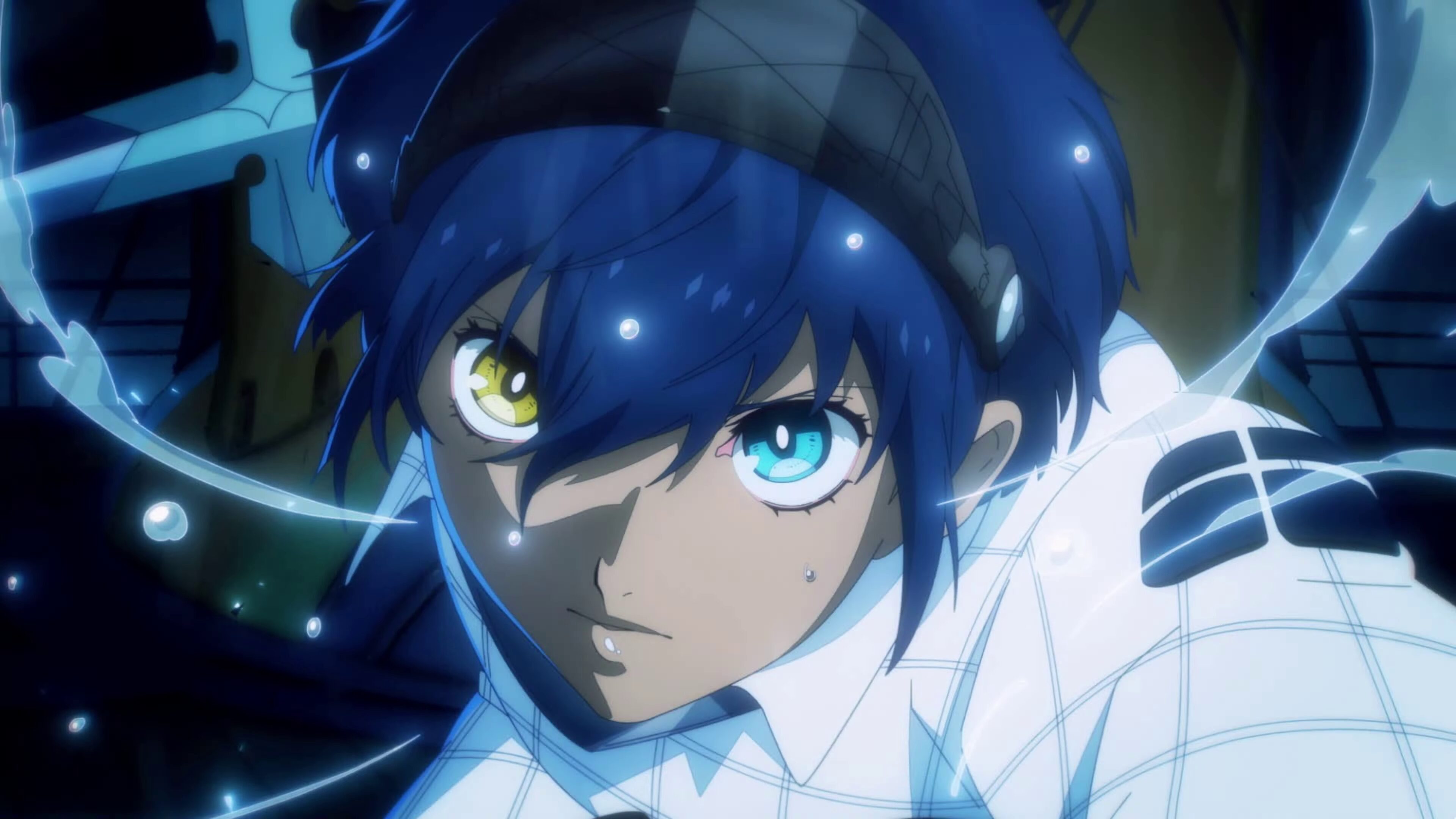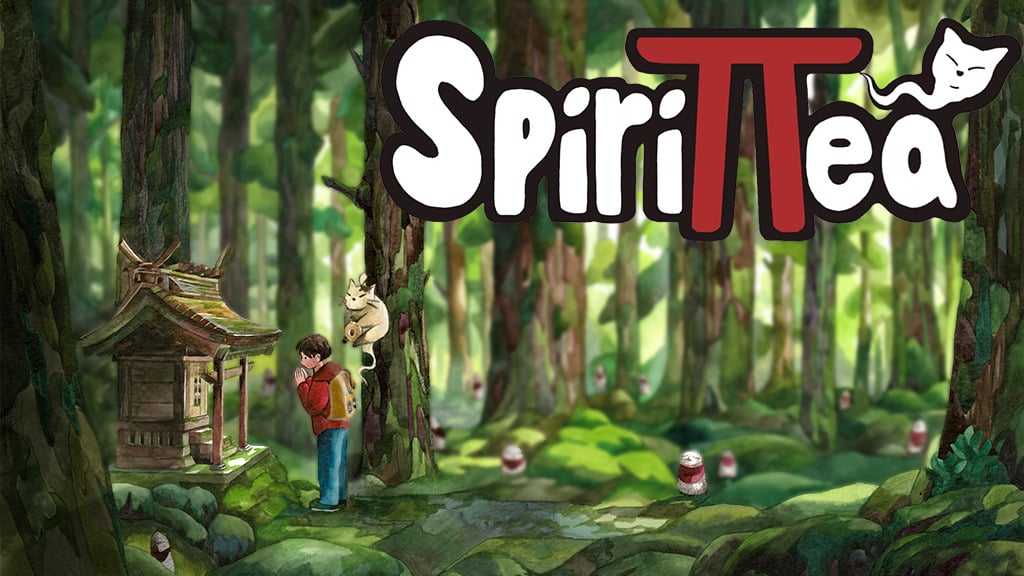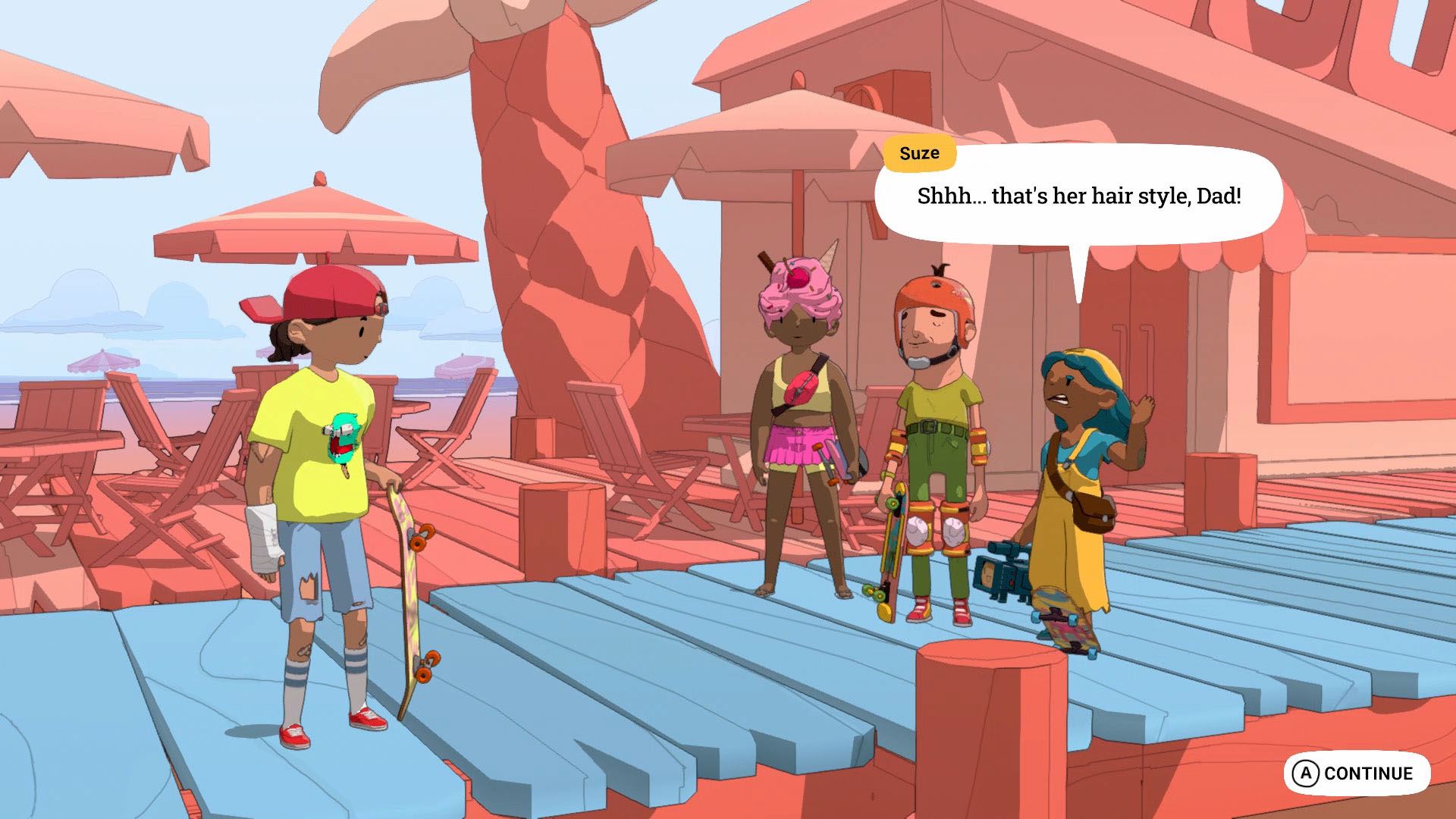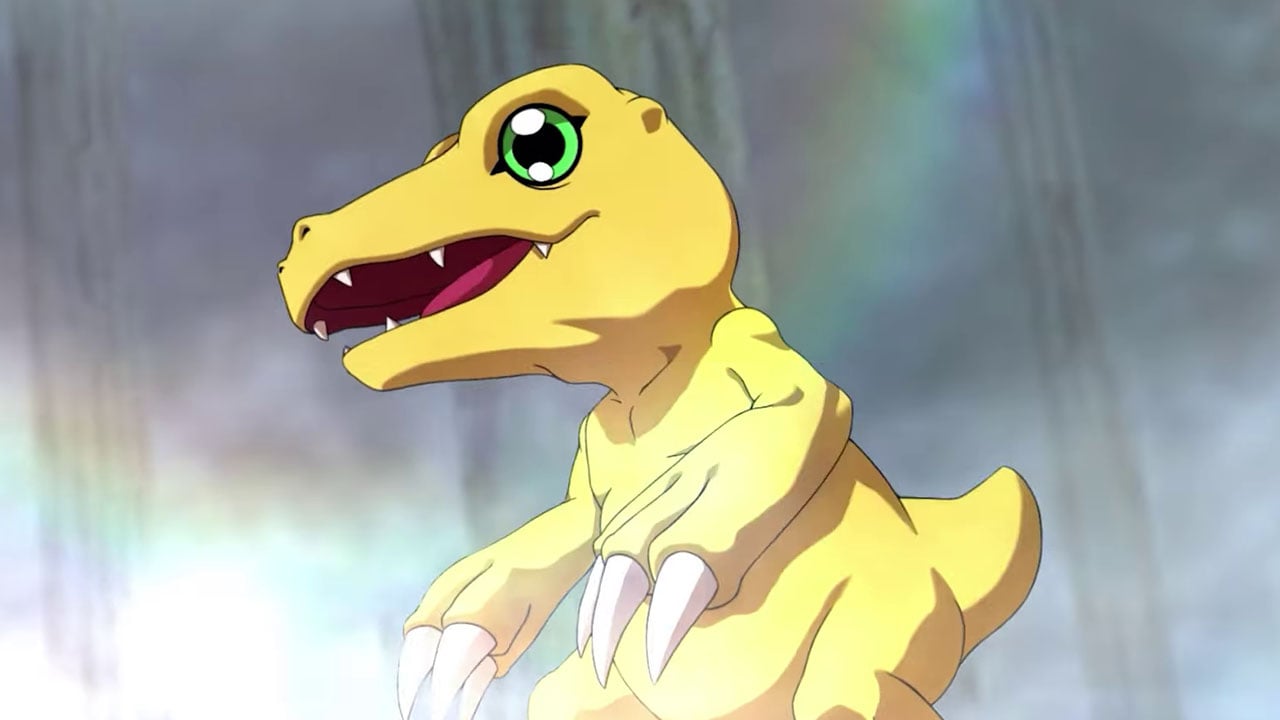# Metaphor: ReFantazio ‘Awaken’ trailer; ‘ATLUS Exclusive’ introduces Archetype job system

Publisher ATLUS and developer Studio Zero have released the “Awaken” trailer and a second “ATLUS Exclusive” showcase video for Metaphor: ReFantazio.
During the showcase, Metaphor: ReFantazio director Katsura Hashino explains how Archetypes, or jobs, branch and evolve throughout the player’s journey. There are 14 basic Archetypes—such as the Magician, the Thief, the Seeker, and the Monk—which each have a lineage that expand to more Archetypes that unlock as the game progresses. In total, the game features more than 40 Archetypes, including the Masked Dancer, the Summoner, the Berserker and many more.
Watch the trailer, new gameplay, and the showcase below, including a full transcript.
Hello everyone, I’m Katsura Hashino, the director of Metaphor: ReFantazio. You may know some of my previous work, including Shin Megami Tensei III and Persona 3, 4, and 5. At Summer Game Fest held in Los Angeles, California, we announced there are 14 Archetype lineages, which amount to more than 40 Archetypes. Understanding the various Archetypes is crucial to mastering this title’s battle system. In this edition of the ATLUS Exclusive 2 Metaphor: ReFantazio Showcase, we will dive deeper into the different types of Archetypes and how to use them. For those who haven’t watched in our previous Showcase, we introduced the overall game flow. We will continue to reveal new content on Metaphor: ReFantazio on our ATLUS YouTube channel, so please be sure to subscribe. Let’s get started!
First, let’s review the battle system introduced in the previous live stream. Metaphor features a turn-based and action-oriented battle system where enemies of lower rank are defeated through real-time action, allowing you to proceed at a quick pace. In this innovative battle system, against higher ranked enemies, players can use the real-time action to enter turn-based combat with an advantage.
Metaphor incorporates tactical planning through action into its established systems, along with a high degree of party composition freedom through job changes. Central to this approach are the game’s new job types known as Archetypes, which players can equip to their protagonist. To prepare these Archetypes for the protagonist, it’s crucial to first introduce the facility known as the “Akademia.”
Akademia
In the early stages of the story, the protagonist gains access to a mysterious location called “Akademia.” As you can see, it’s a place adorned with a plethora of books, giving it the atmosphere of a sanctuary of knowledge.
The individual in Akademia has high hopes for the protagonist’s awakened Archetypes. He is well-versed in Archetype knowledge and will lend his support to the protagonist’s journey, helping him to awaken Archetypes.
Archetypes are managed in lineages such as this one, branching out as they are acquired during the journey. This is a game screen from the early stages of the story, so right now we only have access to the initial Archetypes with basic skills, but once you’re able to swap Archetypes, the real game strategy begins.
Details on how the protagonist comes to visit this place will be shared in detail in subsequent updates, so please look forward to it.
Now I’d like to introduce the types and characteristics of Archetypes, as well as details about the related battle system, including some that have not yet been revealed.
Archetype Lineage
In the last live stream, we introduced the different types of Archetypes, including some of the foundational ones.
The Versatile Seeker, who is a well-rounded Archetype; the Mage, who can exploit the enemy’s weak points with powerful magic; the Thief, skilled in abilities like robbery; the Brawler, who excels in physical attacks using their fists.
In terms of other initial Archetypes, we have the Warrior, who excels in sword attacks; the Knight, with outstanding defensive skills; the Healer, who specializes in recovery; the Commander, with skills related to formation and support; the Gunner, who can shoot from a distance; the Merchant, who can use money-related attacks; and the Faker, with tricky moves.
As the game progresses, players can unlock evolved Archetypes such as the Masked Dancer, whose skills and resistances can be fully changed with equipment; the Summoner, who is perceived as a highlight in job change games with its power to summon monsters; and the Berserker, who has tremendous destructive power.
There are 14 basic Archetype lineages, and when the variations of each Archetype are added up in total, there are more than 40 Archetypes available.
Each Archetype gains experience through battle and learns various skills. There’s a wide variety of skills with different attributes and ranges, such as buffs, recovery, and passive skills to improve abilities. Mastering these skills allows players to gain an advantage in battles. Furthermore, as Archetypes evolve through growth, players can advance to higher-tier Archetypes.
While the Archetypes like the ones introduced earlier are unlocked as the base Archetype of each lineage, progressing them through battle and strengthening bonds with supporters encountered on the journey is crucial. This system unlocks conditions for acquiring even more advanced Archetypes, providing substantial depth and party development for players to enjoy and experience.
For example, the Seeker, which first awakens for the protagonist, is a lineage in the Seeker category. And by deepening the bond with the supporter who controls this lineage, the character can evolve into the Magic Seeker, who wields powerful wind magic as well as reinforcement support and passives, and then onto Soul Hacker, who has powerful magic such as additional MP recovery effects and penetration resistance.
The Gunner, who can shoot from a distance, is a heroic figure in the ranged category, and can evolve into Sniper, who is good at all target attacks, and then onto Dragoon, who can trigger attacks with various magical attributes by deepening the bond with the supporter who controls this lineage.
Each Archetype variation is uniquely crafted with dedicated artwork and the appearance of each character changes based on the equipped Archetype, so I think you will enjoy the work very much.
Guest Artists
This title was created with the cooperation of guest creators, including Koda Kazuma for the background concept art, and Ikuto Yamashita for the gauntlet runner design.
The Archetype designs, boasting over 40 variations, are not only designed by Shigenori Soejima, who is in charge of character design for this title, but also by Yuji Himukai, the character designer for the Etrian Odyssey series, who is likely familiar to ATLUS fans. The Etrian Odyssey series is a dungeon-crawling RPG based on creating characters from a large number of jobs and organizing them into parties, and the fact that we have incorporated the ideas of the creator who has consistently been in charge of the design of the series is not only impressive, but also an appropriate element for the 35th anniversary title of the ATLUS brand, so please look forward to it as well.
Archetype Battle System
In the last live stream, we explained the Archetype system that allows you to transform at any time during a battle and activate their skills, after entering a turn-based battle with the squad button. Today I would like to introduce the Archetype battle system in more detail.
Against higher ranked foes, players can stun enemies with fast action before engaging in advantageous squad turn-based battles. However, if attacked by enemies first, the turn-based battle will begin with a disadvantage. Players who prefer certainty in their attacks or struggle with action sequences should not try to take on the enemies through fast battle, but rather use the squad button to engage in turn-based combat. Depending on the situation, players are encouraged to adapt between high-risk high-reward combat and low-risk low-reward strategies.
The squad battle is a turn-based battle system adopted from Shin Megami Tensei III. In this system, the number of actions per turn is determined by the number of party members, and the number of actions increases if the enemy’s weak points are exploited. So, strategize your next move wisely. You can eliminate enemies unilaterally without giving them a turn. However, this system is a double-edged sword, since this also applies for the opponent. If enemy attacks exploit your party’s weaknesses, then your party’s turn may not come for a while, leading to challenging battles. Metaphor is an evolution of our command battle system that has been cultivated over the years, and its innovative Archetype system is unique to this title.
In command battles, players can change the party formation front and back, and each Archetype has its optimal position of strength. For example, the Mage can cast magic from the back row to compensate for its weak point, low defense, to some extent, maintaining its attack power. The Knight can withhold its attacks and attract enemy attacks from the back row, and therefore induce enemy attacks with minimal damage. The Gunner, who can use shooting is an Archetype that specializes in long-range attacks from the back row. The Commander can change the formation of all members with its skills, allowing each player to freely create their own strategy.
Synthesis
There is a special technique called Synthesis that differs from normal skills. Synthesis, which means integration in psychological terms, is a system that allows Archetypes to combine with other party members’ Archetypes. It can activate a special technique that is not available otherwise. To perform this skill, it consumes more than a normal action as it consumes an additional action from your ally’s turn as well. This technique is more powerful for that reason.
For example, while a Mage and Healer can only target a single enemy with their attack, with the use of synthesis, the target can be changed to all enemies. The Seeker’s main attack is wind magic. But by using synthesis, the seeker can use attacks with attributes that are normally unavailable to it, such as light or strike. In addition, Warriors are good at physical attacks. But if many of the same Archetype are placed in a party, the attack characteristics will naturally be skewed. However, the special Synthesis attack that can be unleashed by three Warriors can do a surprising amount of damage even in the early stages of the game.
This system is an important element of the strategy, and if used properly, it can eliminate the enemies all at once. The activation conditions change depending on the combination of the party, so it is a fun element to try out different configurations and discover new synthesis combinations.
Party Configuration
Moreover, the development team has worked hard to ensure that the diverse range of Archetypes remains engaging even in the later stages, allowing players to enjoy different compositions. We aimed for a balance to avoid a situation where players’ party compositions become similar as the game progresses, or where only certain Archetypes are used. When players change from one Archetype to another, they can inherit the skills they have already mastered to the new Archetype.
The command battle system not only includes action count strategies, but also formation tactics, special moves called Synthesis, and a skill inheritance system, providing numerous ways to creatively configure Archetype strategies in the party. While the party consists of four members initially, it can expand to seven as the story progresses. All members can equip any of the 40-plus Archetypes, so we hope players enjoy developing their unique strategies.
Fast Battle Actions
Now that we have explained how to use Archetypes in command battles, let’s discuss how Archetypes abilities come into play in other ways.
Weapons change depending on which Archetype is equipped, and this also affects the real-time action fast combat that can be used before entering turn-based squad battles. For example, the Seeker’s one-handed sword allows for quick, successive strikes to deal damage to enemies. Let’s change the Archetype of the protagonist to the Unlocked Warrior. You can change the Archetype of your party members as well from each tree, but the fast action is a move specific for the protagonist, so we want you to try out not only the command battles, but also the strategic action.
In the case of the Warrior’s Great Sword, its large swing delivers powerful blows, and while swinging it, the user is not susceptible to preemptive strikes from enemies. In the case of the Mage’s Staff, the attack range extends not only forward, but also around the user, making it effective in situations where the player is surrounded by multiple enemies. It can wipe out many monsters when outnumbered and outclassed.
Additionally, there are Archetypes that can use ranged weapons. The Faker can throw knives, and the Gunner uses a crossbow, allowing attacks from a safe distance. Enemies roaming the field also have various characteristics and weaknesses. For instance, you might use a Gunner with long distance attack range to take down flying foes. However, if you choose the protagonist’s Archetype focusing mainly on fast action, you will fight with that Archetype when you enter a squad battle. You cannot swap Archetypes in a squad battle, so it’s important to plan ahead of time.
We hope that everyone will enjoy the fast and squad combat.
Dungeon Progression
Let me also talk about the dungeons. There are various enemies in the dungeons. Many familiar creatures from fantasy worlds are recreated in a modern design. Some enemies that ambush you, some that hide underground, and some that appear in a groove. There are no dungeons that require a specific type of Archetype party, so please enjoy trying out various party strategies of your choice.
Although there are tough enemies and bosses that force you into battles. When this happens, the type of party you bring will affect the battle. Monsters called “Humans” are especially tricky to face, so beware. We think you will enjoy planning strategies for the battles ahead.
Moreover, the degree of freedom and party formation, and the fact that the difficulty level varies depending on which quest you conquer first, can affect the perceived difficulty of battles, and a slight error in judgment can be fatal in this battle. The difficulty of the game can be changed at any time, and by using the Retry feature, you’ll be able to return to the top of the battle and take on the challenge again with other strategies you might have thought of. So please rest assured that this game is made in a way that ensures all players can confidently take on the challenges.
Additionally, a Network feature allows players to view the party compositions used by other players who’ve cleared the same dungeon, available to view at any time. With the press of a button, you can instantly switch to those compositions, making it easier to adapt and strategize. I’m sure there are players who remember playing classic job change games based on the recommended information of specific party setups for certain dungeons. This Network feature is like a modern version of that kind of playstyle. Above all, we wanted players to be able to see firsthand how other players are progressing in the dungeon they are currently conquering, using their own party composition and ingenuity, even though it is a loosely connected aspect.
Summary
So, what did you think? In this video, we have introduced the various types and uses of Archetypes. We hope that even those who are unfamiliar with past ATLUS titles will be able to easily enjoy this fantasy RPG based on its unique job system, which is a staple in fantasy RPGs. We’ve added various unique features into Metaphor, from the system and volume to its visuals, and we hope that you will enjoy this fantasy RPG.
Metaphor is launching on October 11, 2024 and is open for pre-orders. Starting today, you can also pre-order the digital version. If you are interested in Metaphor, please be sure to pre-order or add to your wishlist. Those who pre-order will receive pre-order bonuses, including the “Archetype EXP Chest Set” and an “Adventurer’s Journey Pack.” Both in-game item sets are useful for battles and party development. They are great value downloadable contents that you can get just for pre-ordering, so please consider them.
Metaphor will be available in both standard and special editions for physical and digital formats. The development team has come together to create a Collector’s Edition that allows everyone to celebrate ATLUS’ 35th anniversary. The outer box is designed by Mr. Soejima, and the art book is truly gorgeous, including art from various guest artists. We hope you will have a copy on hand to enjoy.
In the digital 35th Anniversary History Book, you will find a timeline of past titles, introductions to major titles, and a conversation with a very special guest talking about what makes RPGs so much fun to play. Additionally, this edition is filled with congratulatory comments from various creators in the industry.
The digital soundtrack includes an all-time best album that looks back on the brand’s 35th anniversary. It is a fascinating musical journey that gives both old and new fans a sense of the history of ATLUS’ sound.
In addition, we have included a cloth world map of the United Kingdom of Euchronia, a set of pins representing the Homo Tenta monsters, a SteelBook with dedicated key art, a two-disc Metaphor: ReFantazio soundtrack composed by Shoji Meguro, a digital costume and battle background music set, and a sticker sheet of national flags, Archetype designs, and more. This is a limited edition, so if you would like to take advantage of this opportunity, please consider pre-ordering while supplies last.
Thank you for your continued support and excitement for Metaphor: ReFantazio. We hope you will enjoy these special items and look forward to seeing you in the next Showcase.
Closing
We are happy to hear that so many people were interested in the battle system in the last live stream. So finally, next time, we would like to introduce not only the gameplay, but also the world setting, characters, and story that we have been elaborating in our first attempt at a fantasy RPG. This is a work full of twists and turns, so please stay tuned for the next Exclusive.
Metaphor is planned to be released on October 11. Be sure to pre-order and add to your wishlist. Thank you very much for your time today.
If you liked the article, do not forget to share it with your friends. Follow us on Google News too, click on the star and choose us from your favorites.
If you want to read more News articles, you can visit our Game category.




